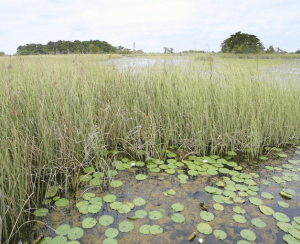Florida rivers’ low profile puts them at risk

A saw-grass swamp at the headwaters on the 310-mile St. Johns River near Vero Beach (George Skene, Orlando Sentinel / September 27, 2012)
For an imaginary moment, swim with Hueland Todd Brown as he descends into a deep, caramel-colored river, feeling his way with his hands and hoping nothing bites.
Brown lives by the Choctawhatchee, a wild river that coils through remote forests in the Florida Panhandle and is so much a part of him that he can taste its freshness in the meat of its fish.
Many Floridians, however, don’t know what the nearest river even looks like, which rivers their septic tanks bleed into, which ones gag on our lawn fertilizers and dog messes, and which must swallow our storm water. That disconnect, say environmental scientists and advocates, is killing Florida’s rivers.
“Informing people about fertilizer on their lawns, about cleaning up after their pets, would be really good,” said John Fauth, a wetlands scientist at the University of Central Florida. “But that’s hard when the river’s not right where they can see it.”
Read the full story from the Orlando Sentinel here.
UCF Biology Professor John Fauth researches quantitative and experimental ecology, with special emphasis on amphibians & reptiles, wetlands and coral reefs. Also environmental health assessment using an integrated approach that includes traditional measures, such as indicator species, and cellular diagnostics. Contact him here.
